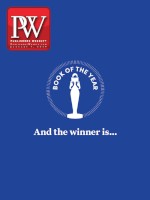Last year was a bad one for stocks, and it was particularly tough for the 11 companies that make up the Publishers Weekly Stock Index. While the Dow Jones Industrial Average fell 5.6% in 2018, the PWSI tumbled 21.2%. Share prices rose for only three of the 11 companies listed on the PWSI.
The worst performing stock—for the second year in a row—was LSC Communications. The share price for the printing giant fell 53.8% despite the announcement last fall that the company had agreed to be acquired by Quad/Graphics in an all-stock transaction valued at $1.4 billion. Since LSC was spun off from the former R.R. Donnelley in October 2016, its share price has plunged 75.5%. Barnes & Noble Education—which was spun off from its parent company, Barnes & Noble, Inc., in fall 2015—saw its stock price fall 51.3% in 2018 and its share price is down 72.1% since becoming a standalone company. B&NE, which is the second largest operator of college stores, is facing the same challenges as college publishers—how to adjust to the decline in print sales of college materials as demand for digital and online content grows.
John Wiley has been very aggressive in diversifying its business to rely less on revenue of print texts. That strategy paid off in 2017, when its share price rose 20.6%, but in 2018, Wiley’s stock price dropped 28.6%. In Wiley’s two most recent quarters, sales and earnings have not reached analysts’ estimates. Wiley attributed its earnings decline, in part, to continued investment in growth opportunities in its research and education groups.
The world’s largest educational publisher, Pearson, had the largest increase in its share price of all the companies listed on the PWSI. The increase follows two years of corporatewide downsizing that cut a total of 6,000 jobs as part of Pearson’s efforts to become “a leaner, more agile business.” The company’s shares received a boost in the summer, when Pearson executives, in reporting six-month results, said they expect “underlying” profits (earnings that exclude one-time items) to grow for 2018.
Barnes & Noble’s stock price fell nearly 40% in 2017, but in what was a volatile year for the retailer, its shares rose 5.8% in 2018. B&N fired CEO Demos Parneros just before the July 4 holiday. In a lawsuit filed by Parneros following his ouster, it was revealed that a bid to acquire B&N had fallen through at the last minute. According to B&N, that disclosure prompted a number of companies to make overtures about buying the company, which led B&N to form a committee to review its strategic alternatives, something that helped lift its share price.
Market Watch 2018
| Company | Dec. 29, 2017 | Dec. 31. 2018 | Change |
|---|---|---|---|
| Pearson | 9.82 | 11.94 | 21.6% |
| Barnes & Noble | 6.70 | 7.09 | 5.8% |
| Scholastic | 40.11 | 40.26 | 0.4% |
| Houghton Mifflin Harcourt | 9.30 | 8.86 | -4.7% |
| Educational Dev. Corp. | 18.95 | 8.53* | -10.0% |
| CBS | 59.00 | 43.72 | -25.9% |
| John Wiley | 65.75 | 46.97 | -28.6% |
| News Corp | 16.60 | 11.55 | -30.4% |
| IDW Media | 46.00 | 34.74 | -32.4% |
| B&N Education | 8.24 | 4.01 | -51.3% |
| LSC | 15.15 | 7.00 | -53.8% |
| Publishers Weekly Stock Index | 295.62 | 233.02 | -21.2% |
| Dow Jones Aver. | 24,719.22 | 23,327.46 | -5.6% |



 Volume 266
Issue 1
01/07/2019
Volume 266
Issue 1
01/07/2019





